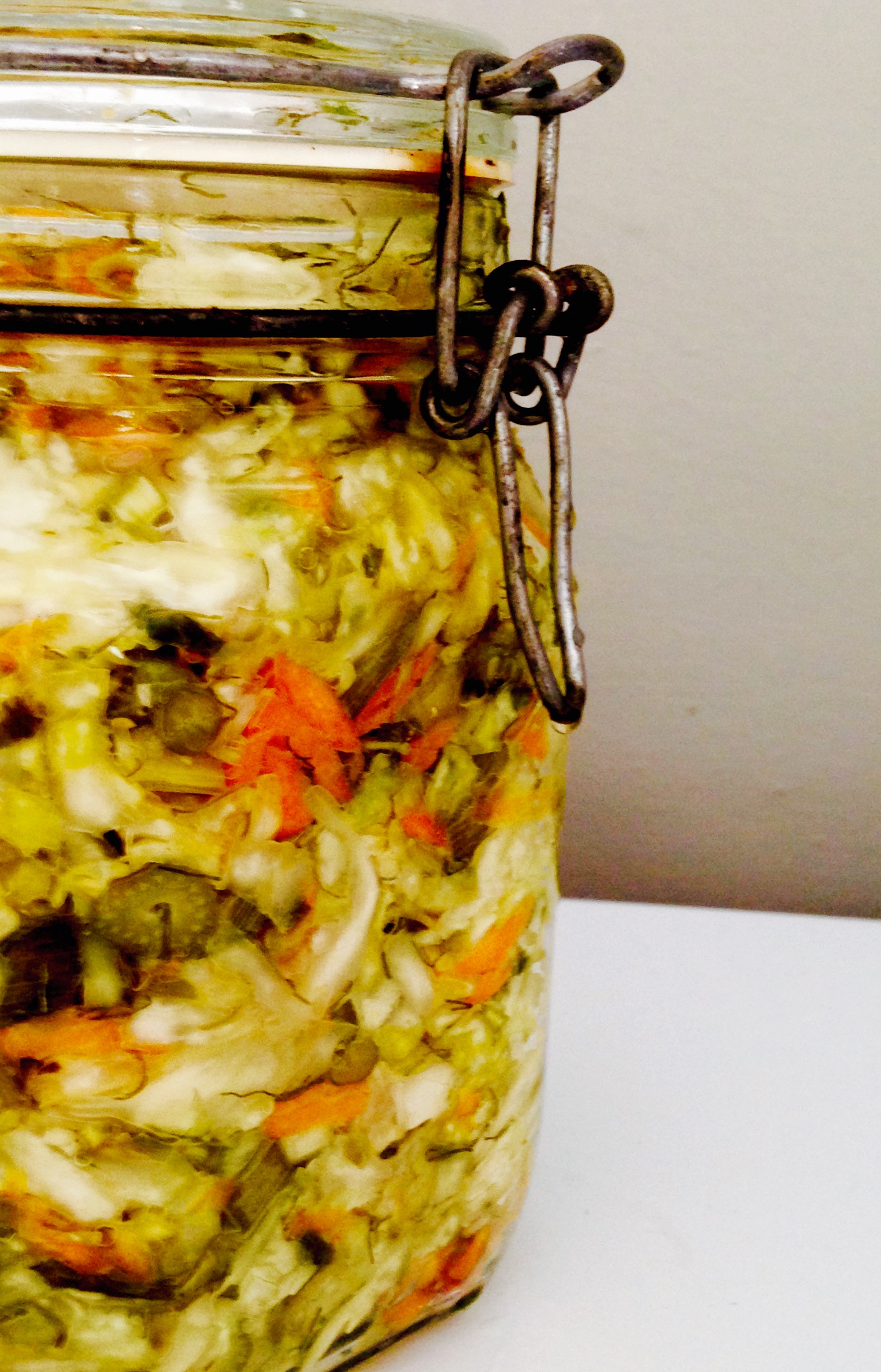WHOLE PLANT GARDEN KRAUT
Make better use of the whole vegetable by fermenting stems and more fibrous parts. Use whatever veggies, stems, tops, and tubers you have. Fermentation will make these lesser-used parts of the plant more palatable, digestible, and pleasurable to eat, while benefitting your gut, thusly maximizing your health. For more in-depth information on fermentation, visit The Fermentation School.
Fennel fronds and stems
Radishes, and their tops
Garlic scapes
Cabbage
Green onion tops
Grated kohlrabi
Sea Salt
Chop all the vegetables and stems into at least bite-sized pieces, or smaller if it appeals to you. I like to shred the cabbage rather coarsely, grate the kohlrabi and radish, and then dice the rest. Per five pounds of vegetable matter, add 3 T. sea salt. Combine well, and then press and knead the mixture in a bowl to release the vegetable’s juices. You are creating brine. When you’ve squeezed out enough juice to surround the vegetables well, pack tightly into a jar that will fit everything, with room for a weight (such as a smaller baby food jar, or a shot glass. Ensure that the brine is covering the vegetables by at at least 1 inch. Place a baby food jar or shot glass on top of everything to weigh it down under the brine, and then put the jar’s lid on. Leave to ferment at room temperature for at least 2 weeks (more is OK), before moving to the refrigerator.
If you have questions or need troubleshooting, such as what to do about mold on fermented vegetables or why does garlic turn blue when fermented, check out all our courses, and the online community fermenter’s forum at The Fermentation School.
